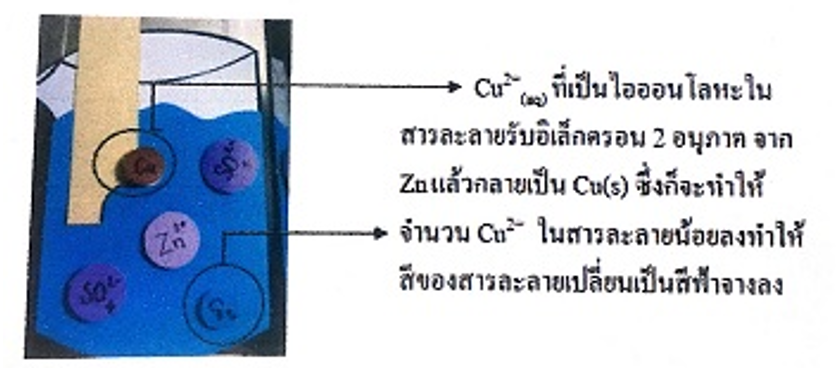ผลการวิเคราะห์การสะท้อนผลปฏิบัติทดลองสอนของนักศึกษาวิชาชีพครูวิทยาศาสตร์
Main Article Content
บทคัดย่อ
การสะท้อนผลเป็นหนึ่งในตัวบ่งชี้ที่แสดงให้เห็นคุณภาพการสอนและยังคงเป็นประเด็นที่หลายประเทศต่างให้ความสนใจ ดังนั้นกระบวนการผลิตครูควรให้ความสำคัญกับการสะท้อนผลของนักศึกษาวิชาชีพครูโดยเฉพาะในรายวิชาวิทยาศาสตร์ซึ่งเป็นวิชาหลักและมีความสำคัญต่อการเรียนรู้ งานวิจัยนี้มีวัตถุประสงค์เพื่อศึกษาระดับความสามารถและรูปแบบการสะท้อนผลของนักศึกษาวิชาชีพครูวิทยาศาสตร์เมื่อได้รับประสบการณ์การปฏิบัติทดลองสอนจริง แบบแผนการวิจัยใช้การวิจัยเชิงคุณภาพแบบกรณีศึกษาโดยดำเนินการศึกษากับนักศึกษาวิชาชีพครูวิทยาศาสตร์ชั้นปีที่ 4 จำนวน 30 คน บันทึกการสะท้อนผลปฏิบัติทดลองสอนและการสัมภาษณ์นำมาใช้เป็นแหล่งข้อมูลสำคัญสำหรับการวิเคราะห์ข้อมูล ผลการวิจัยพบว่าความสามารถของนักศึกษาวิชาชีพครูส่วนใหญ่จัดอยู่ในระดับการสะท้อนผลแบบเบื้องต้นและแบบผิวเผิน นักศึกษาได้บรรยายเหตุการณ์ต่างๆ ที่เกิดขึ้นในชั้นเรียนเกี่ยวกับพฤติกรรมในการเรียนและการสอนของตนเอง นอกจากนี้นักศึกษายังกล่าวถึงเทคนิคหรือกลวิธีจัดการชั้นเรียนที่ใช้ให้บรรลุตามจุดประสงค์การเรียนรู้ ส่วนรูปแบบการสะท้อนผลจากการปฏิบัติทดลองสอนที่พบมากที่สุดคือ การสะท้อนผลแบบเบื้องต้น การสะท้อนแบบผิวเผิน ร่วมกับการสะท้อนผลแบบคำนึงถึงศาสตร์การสอน ผลการวิจัยนี้แสดงให้เห็นว่า การมีส่วนร่วมในการสะท้อนผลและได้รับข้อมูลป้อนกลับจากการฝึกประสบการณ์วิชาชีพในรายวิชาอย่างเป็นระบบสามารถส่งเสริมให้นักศึกษาได้เรียนรู้การสะท้อนผล รวมทั้งการมอบหมายให้นักศึกษาทำชิ้นงานบันทึกการสะท้อนผลตนเองสามารถช่วยเพิ่มขีดความสามารถในการสะท้อนผลได้ ดังนั้นการเตรียมความพร้อมของการผลิตครูในสถาบันต่างๆ จึงควรให้ความสำคัญกับการสะท้อนผลให้มากเพียงพอเพื่อช่วยให้นักศึกษาวิชาชีพครูนำประสบการณ์ไปใช้ในการพัฒนาวิชาชีพในอนาคต
Article Details
วารสารวิทยาศาสตร์และวิทยาศาสตร์ศึกษา (JSSE) เป็นผู้ถือลิสิทธิ์บทความทุกบทความที่เผยแพร่ใน JSSE นี้ ทั้งนี้ ผู้เขียนจะต้องส่งแบบโอนลิขสิทธิ์บทความฉบับที่มีรายมือชื่อของผู้เขียนหลักหรือผู้ที่ได้รับมอบอำนาจแทนผู้เขียนทุกนให้กับ JSSE ก่อนที่บทความจะมีการเผยแพร่ผ่านเว็บไซต์ของวารสาร
แบบโอนลิขสิทธิ์บทความ (Copyright Transfer Form)
ทางวารสาร JSSE ได้กำหนดให้มีการกรอกแบบโอนลิขสิทธิ์บทความให้ครบถ้วนและส่งมายังกองบรรณาธิการในข้อมูลเสริม (supplementary data) พร้อมกับนิพนธ์ต้นฉบับ (manuscript) ที่ส่งมาขอรับการตีพิมพ์ ทั้งนี้ ผู้เขียนหลัก (corresponding authors) หรือผู้รับมอบอำนาจ (ในฐานะตัวแทนของผู้เขียนทุกคน) สามารถดำเนินการโอนลิขสิทธิ์บทความแทนผู้เขียนทั้งหมดได้ ซึ่งสามารถอัพโหลดไฟล์บทความต้นฉบับ (Manuscript) และไฟล์แบบโอนลิขสิทธิ์บทความ (Copyright Transfer Form) ในเมนู “Upload Submission” ดังนี้
1. อัพโหลดไฟล์บทความต้นฉบับ (Manuscript) ในเมนูย่อย Article Component > Article Text
2. อัพโหลดไฟล์แบบโอนลิขสิทธิ์บทความ (Copyright Transfer Form) ในเมนูย่อย Article Component > Other
ดาวน์โหลด ไฟล์แบบโอนลิขสิทธิ์บทความ (Copyright Transfer Form)
เอกสารอ้างอิง
นฤมล ยุตาคม สิริพร ทิพย์คง ชีพสุมน รังสยาธร พงศ์ประพันธ์ พงษ์โสภณ ชนิศวรา เลิศอมรพงษ์ ภัทรวรรธน์ จีรพัฒน์ธนธร และณัฐประภา เศรษฐกสิวิทย์. (2559). การพัฒนาโปรแกรมเพื่อส่งเสริมสมรรถนะด้านความรู้ความสามารถในการสอนเนื้อหาวิชาเฉพาะของนิสิตนักศึกษาฝึกประสบการณ์วิชาชีพครู. วารสารวิทยาสารเกษตรศาสตร์ สาขาสังคมศาสตร์, 37(3), 306-318.
สุชีรา มะหิเมือง. (2560). การพัฒนาองค์ประกอบของความสามารถทางการสะท้อนคิดของนักศึกษาครู มหาวิทยาลัยราชภัฏสวนสุนันทา. วารสารวิชาการและวิจัยสังคมศาสตร์, 12(35), 17-32.
สุระศักดิ์ เมาเทือก เกียรติสุดา ศรีสุข น้ำผึ้ง อินทะเนตร และอุไรวรรณ หาญวงค์. (2558). การใช้การสะท้อนคิดเพื่อพัฒนาสมรรถนะครูวิทยาศาสตร์ในการจัดการเรียนการสอนเพื่อส่งเสริมการรู้เรื่องวิทยาศาสตร์ของนักเรียน. วารสารศิลปศาสตร์ มหาวิทยาลัยแม่โจ้, 3(1), 13-36.
อมรรัตน์ วัฒนาธร. (2556). การศึกษาครูกับการเปลี่ยนแปลงเพื่อความงอกงามของคนและสังคม. วารสารศึกษาศาสตร์ มหาวิทยาลัยนเรศวร, 15(1), 111-116.
อรรจนา วิชาลัย และสุวัตร นานันท์. (2561). การสืบเสาะหาความรู้แบบเปิดร่วมกับการใช้แบบจำลองทางกายภาพ: ความเข้าใจมโนมติของนักเรียนชั้นมัธยมศึกษาปีที่ 5 เรื่อง การแตกตัวของกรดและเบส. วารสารวิทยาศาสตร์ และวิทยาศาสตร์ศึกษา, 1(1), 74-85.
Allan, E. G. and Driscoll, D. L. (2014). The three-fold benefit of reflective writing: Improving program assessment, student learning and faculty professional development. Assessing Writing, 21, 37-55.
Beaufort, A. (2007). College writing and beyond: A new framework for university writing instruction. Logan: Utah State University Press.
Bell, N. D. (2007). Microteaching: What is it that is going on here? Linguistics and Education, 18(1), 24-40.
Blonder, R., Rap S., Mamlok-Naaman, R. and Hofstein, A. (2015). Questioning behavior of students in the inquiry chemistry laboratory: Differences between sectors and genders in the Israeli context. International Journal of Science and Mathematics Education, 13(4), 705-732.
Carl, A. and Strydom, S. (2017). e-Portfolio as reflection tool during teaching practice: The interplay between contextual and dispositional variables. South African Journal of Education, 37(1), 1-10.
Cole, A. and Knowles, P. (2000). Researching teaching: Exploring teacher development through reflexive inquiry. Toronto: Allyn and Bacon.
Griffin, M. L. (2003). Using critical incidents to promote and assess reflective thinking in preservice teachers. Reflective Practice, 4(2), 207-220.
Grossman, R. (2009). Structures for facilitating student reflection. College Teaching, 57(1), 15–22.
Gutierez, S. B. (2015). Teachers’ reflective practice in lesson study: A tool for improving instructional practice. Alberta Journal of Educational Research, 61(3), 314-328.
Hume, A. (2009). Promoting higher levels of reflective writing in student journals. Higher Education Research and Development, 28(3), 247-260.
Kajder, S. and Parkes, K. (2012). Examining preservice teachers’ reflective practice within and across multimodal writing environments. Journal of Technology and Teacher Education, 20(3), 229-249.
Larrivee, B. (2000). Transforming teaching practice: Becoming the critically reflective teacher. Reflective Practice, 1(3), 293-307.
Larrivee, B. (2008). Development of a tool to assess teacher’s level of reflective practice. Reflective Practice, 9(3), 341-360.
Lotter, C., Singer, J. and Godley, J. (2009). The influence of repeated teaching and reflection on preservice teachers’ views of inquiry and nature of science. Journal of Science Teacher Education, 20(6), 553-582.
Luk, J. (2008). Assessing teaching practicum reflections: Distinguishing discourse features of the “high” and “low” grade reports. System, 36(4), 624-641.
Melville, W., Fazio, X., Bartley, A. and Jones, D. (2008). Experience and reflection: Preservice science teachers’ capacity for teaching inquiry. Journal of Science Teacher Education, 19(5), 477-494.
Murphy, D. L. and Ermeling, B. A. (2016). Feedback on reflection: Comparing rating-scale and forced-choice formats for measuring and facilitating teacher team reflective practice. Reflective Practice International and Multidisciplinary Perspectives, 17(3), 317-333. https://doi.org/10.1080/14623943.2016.1164681.
Oner, D. and Adadan, E. (2011). Use of web-based portfolios as tools for reflection in preservice teacher education. Journal of Teacher Education, 62(5), 477-492.
Rhine, S. and Bryant, J. (2007). Enhancing pre-service teachers’ reflective practice with digital video-based dialogue. Reflective Practice, 8(3), 345-358.
Russell, T. (2005). Can reflective practice be taught? Reflective Practice, 6(2), 199-204.
Ryan, M. (2011). Improving reflective writing in higher education: A social semiotic perspective. Teaching in Higher Education, 16(1), 99-111.
Schön, D.A. (1983). The reflective practitioner: How professionals think in action. New York: Basic Books.
Tan, A. L., Tan, S. C. and Wettasinghe, M. (2011). Learning to be a science teacher: Reflections and lessons from video-based instruction. Australasian Journal of Educational Technology, 27(3), 446-462.
Tripp, T. and Rich, P. (2012). Using video to analyze one’s own teaching. British Journal of Educational Technology, 43(4), 678-704.
Yost, D. S., Sentner, S. M. and Forlenza-Bailey, A. (2000). An examination of the construct of critical reflection: Implications for teacher education programming in the 21st century. Journal of Teacher Education, 51(1), 39-49.
Zangori, L., Friedrichsen, P. J., Wulff, E. and Womack, A. J. (2017). Using the practice of modeling to support preservice teachers’ reflection on the process of teaching and learning. Journal of Science Teacher Education, 28(7), 590-608.


